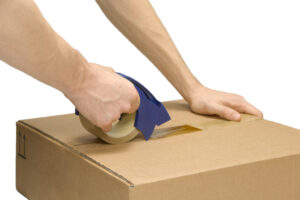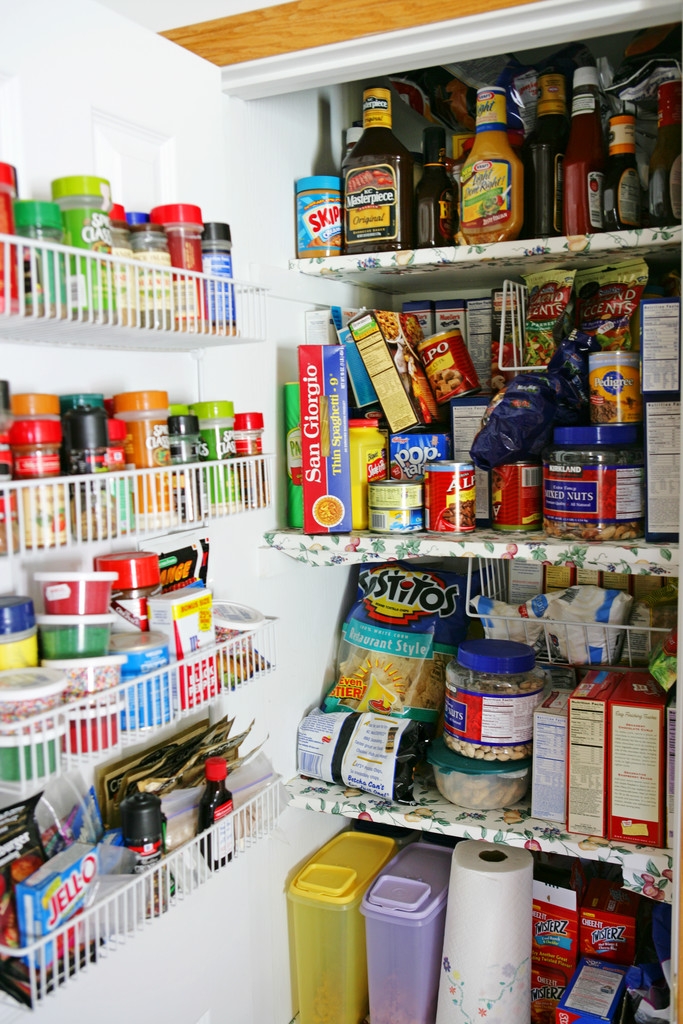Tag Archive: Packaging
Subscription Boxes: Marrying Doorstep Convenience With The Element Of Surprise For A Thriving Business Model
Leave a CommentPeople love receiving surprises – the pleasant kind. There is the anticipation of treasures unveiled and the enjoyment of welcoming new gifts into life. And the subscription box industry capitalizes on this basic tendency to pamper buyers and earn profits.
It is extremely easy for someone – say a beauty product aficionado to go online and sign up for a monthly subscription of products from renowned brands curated with care and delivered in an attractive packaging right to the doorstep. While the actual contents remain a mystery, the theme of the boxes aligns with the niche of the subscription company.
A consumer expecting a goody box of organic food will not discover lingerie nestled in the delivered package. Subscription boxes satisfy the desire to acquire items of interest and they automate the process – ensuring delivery of a bundle once a month, without fail. However there is one aspect of this model that may deter customers from upgrading to the full sized products based on premium performance by the samples and that is visual appeal.
And this is where the importance of the design of subscription boxes – both aesthetic and structural comes into play!
WHY SHOULD SUBSCRIPTION BOX COMPANIES PAY SPECIAL ATTENTION TO THEIR PACKAGING?
The answer is simple. The packaging here becomes prime real estate with which a positive impression can be made on the user. Since there is no flattering lighting, no rack cards and no expensive display cases, the actual delivery box itself must do triple duty to take over the job of these tools of influence. The best products don’t inspire desire if they are poorly ensconced in bubble wrap and dull brown cardboard that tends to turn soggy with moisture.
A subscription box is an experience. It is a small and carefully assembled medley of items the recipient has probably not tried before. Since they are opened and admired in the privacy of a bedroom or a living room, there is a huge opportunity to grab attention without the distraction of a hundred rival products screaming their presence.
WHAT ARE SOME OF THE INDUSTRY LEADERS GOING WITH?
Keeping this fact in mind, many innovative subscription box players choose to put in a great deal of thought where their packaging is concerned. The integrity of the structure must be maintained. It should be able to bear thumps, jostles and drops along the way without affecting the contents inside.
Corrugated constructions are an extremely popular option because they are both sturdy and conducive to printing.
Design wise appealing motifs, colors and abstracts are common. They stand for the personality of the subscription box brand as well as the actual products being offered. Some packages are works of art with etchings on the inside too. It all depends on what is cost effective for the subscription company.
But with advancements in this industry, a polished, sleek look in keeping with the web/store presence of the brand is possible and the budget isn’t really a detriment.
M&M Box Partitions Co. has been a leader in this field since 1968. It assists myriad sectors by supplying high quality partitions that ensure uncompromised delivery of delicate products all over the world.
Share this:
Posted in: Cardboard
Tags: Boxes, Monthly, Packaging, Subscription boxes
How the Cardboard Box Was Invented
Leave a CommentSometimes to really appreciate something that is so simple, like a cardboard box, requires no more than a little imagination or, perhaps, some research into the past. That which we take for granted often can be the most sorely missed from the day-to-day.
Imagine No Cardboard
Imagine all those trips to the post office to mail something that won’t fit in an envelope, or pouring out cereal from that colorful box with the free game on the back, or that big move where you packed box after cardboard box of your belongings. Actually, how about imagining the alternative? This would be a life without cardboard. Likely the alternatives would be any combination of the following: Heavy, breakable and/or prohibitively expensive. Yes, this is the surprising importance of the ever so humble cardboard box.
Origins
As with so many things paper-related, (or with noodles and gunpowder), it all begins in ancient China, some three or four thousand years in the past. Apparently, citizens of the Han Dynasty utilized thick, treated sheets of tree bark to wrap and protect food items. After a long stretch of time, paper in general and cardboard in particular made it to European culture in large part due to the famous Silk Road. It would still be quite some time before we would see something taking the form of what we now know as the “cardboard box.” In 1856 a certain haberdashery wanted a material shaped as a box that could retain its own shape and protect the hats contained within. One might say that cardboard boxes perhaps owe their ubiquitous quality to the difficulty posed by storing and protecting something akin to Lincoln’s stovepipe hat.
M & M Box, which has been manufacturing chip, corrugated and specialty board partitions since 1968, owes its very existence to this invention. Call or email today to discover how M & M Box can help fulfill your shipping material needs.
Share this:
Posted in: Paperboard
Tags: Cardboard, Chipboard, History, Packaging, Paperboard
FOLDING CARTON BOOT-CAMP: EVERYTHING YOU ALWAYS WANTED TO KNOW ABOUT CARTONS BUT WERE AFRAID TO ASK
Leave a CommentIn every industry excellence comes with practice and the dissemination of the latest information around trends and processes. Cartons are no different. With several environmental concerns plaguing packaging in general, cartons made of recycled paper have been touted as a compromise between deforestation and non-biodegradable choke up or pollution.
The Paperboard Packaging Council (PPC) is serious about keeping industry related organizations in the U.S and Canada updated in terms of the whole manufacturing time-line of a carton right from paper selection and prepping to customer delivery, without skipping any steps between.
The Folding Carton Boot camp is a bi-annual event. It is generally held once in winter and once during spring with the latter being the more popular edition. However December 2014 saw an unprecedented 35 individuals from companies far and wide attend the Boot Camp to glean knowledge around:
- Paper production
- The different kinds (grades) of paperboard available
- The process of packaging creation
- The intricacies and best practices of using presses to coat the paperboard with ink
- The complexities of the pre-press process
- The utilization of Computer Aided Design (CAD) in creation and visualization of new carton designs and prototypes
- Colour theory and the direct interrelation between ink colour and consumption (absorption) by the different grades of paperboard
- Creasing, windowing and gluing of cartons
June will see an encore of the event and enthusiastic participation is expected by the PPC.
A part of the allure of the Camp, over and above the detailed information and industry insights, lies in the free resources offered. Not only will students receive The Ideas and Innovation Handbook, the will also get their hands on a binder of paper and carton samples and a consolidated glossary of printing terminology to guide their solo efforts.
The Folding Carton Boot Camp is a certification event and participants have the advantage of going over the material discussed in the form of comprehensive take-home PDFs and worksheets.
Paperboard Packaging Council’s President Ben Marken expressed his delight at the keen interest shown in the Boot Camp and hinted at more value to be delivered to future attendees.
M&M Box participates in this PPC event regularly and is proud to invest in itself and its continued quest to be the best in the market.
Share this:
Posted in: Paperboard
Tags: Cardboard, Carton, Packaging, Paperboard Packagaing Council
The History of the Corrugated Packaging Industry
Leave a Comment
Albert L Jones was the first person to use corrugated paper to ship fragile items such as bottles. In 1871, he was issued a patent for his single sided corrugated board. In 1874, Oliver Long improved on Jones’ design bringing us corrugated board with liner sheets on both sides. This is the corrugated board we know today. In 1889, the very first continuous corrugator was developed by the Sefton Manufacturing Co.
The first known instance of corrugated paper occurred in 1903. In 1905, a group of manufacturers joined together to standardize the material and to make it suitable for all railroad shipping use. The partnership with the railroads helped the expansion and adoption of corrugated packaging. Another jump forward came in 1935 when the Sefton Manufacturing Co. developed the technique to apply heat at the glue line allowing for an instant bond.
All of these developments over the last 143 years have led to M&M Box Partitions ability to serve our customers well. Our strict quality control program ensures that all of your measurements, specifications and special instructions are met. Please contact us today for all of your corrugated packaging needs.
Share this:
Posted in: Corrugated Week
Tags: Manufacturing, Packaging, Sefton, Shipping
How the Right Packaging (Safely) Preserves Your Food
Leave a Comment
Recently, studies have linked BPA, a common chemical in plastics and cans, to numerous health concerns. Autism, asthma, obesity, and even cancer have all been linked to exposure to BPA. By making the switch to cardboard or corrugated packaging for food, consumers can reduce their risk from exposure.
Cardboard can be used in most food storage applications. Even soups and other liquids often found in a can are able to make the transition to cardboard by taking advantage of aluminum foil linings inside the package.
And for food that is packaged as a group but kept separate – such as chocolates and other confections – cardboard partitions can keep individual pieces divided without relying on plastic inserts. This can mean the difference between pulling apart candy that has melted together, and being able to enjoy each piece as desired (Donuts and other baked goods could greatly benefit from this, too!).
Cardboard partitions are also ideal because they work well as far as impact protection goes. Fragile wine bottles may travel long distances from the bottling facility to their final retail destinations. Having cardboard divisions protects them from the outside environment, and also keeps the bottles from bumping into each other during transit.
Choosing cardboard packaging and partitions will allow intact delivery and lower health risks. Always make sure to find an FDA-approved cardboard manufacturer for food preservation needs.
Share this:
Posted in: Uncategorized
Tags: BPA, Cardboard, Cardboard Partitions, Corrugated, Food, Food Packaging, Food Partitions, Food Preservation, Packaging
^



